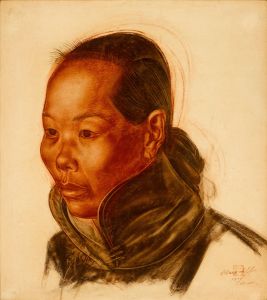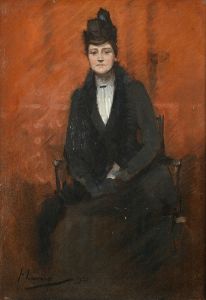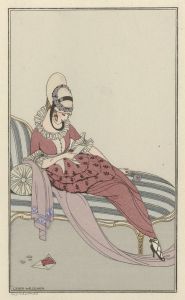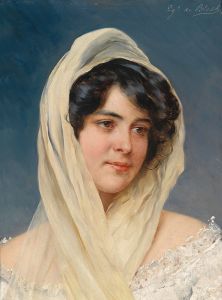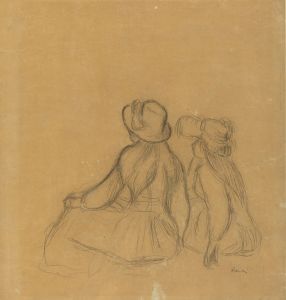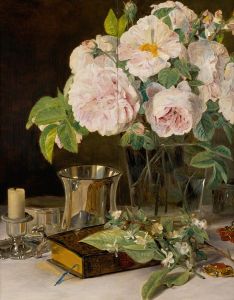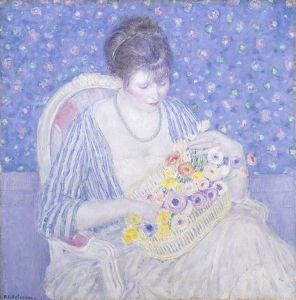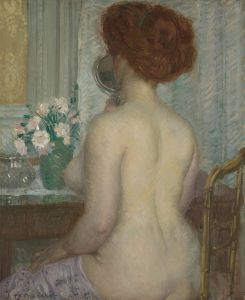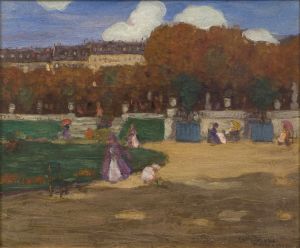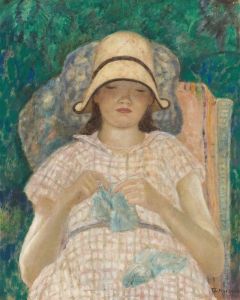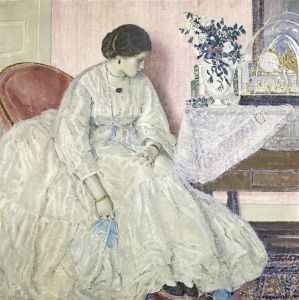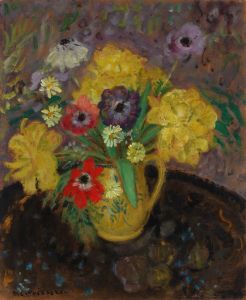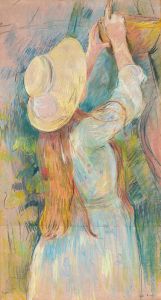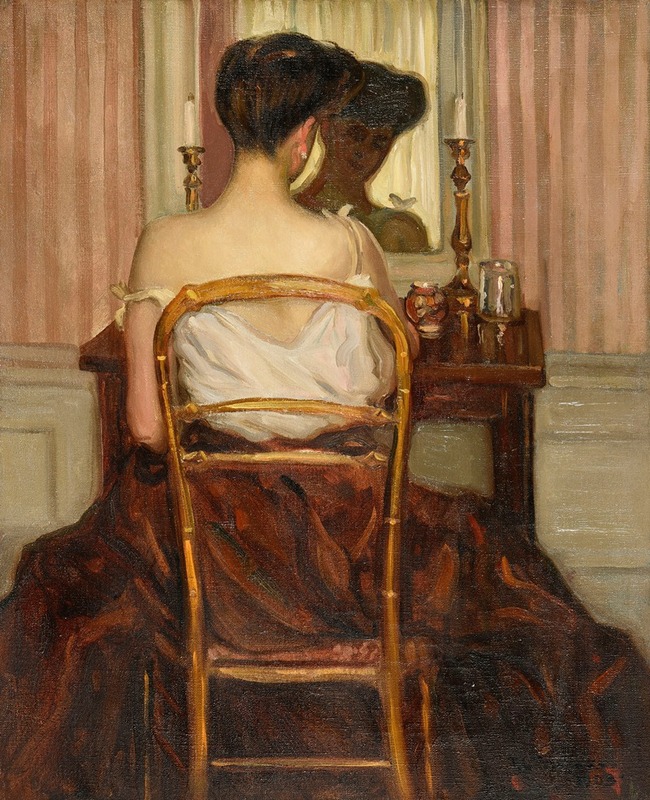
Devant la glace
A hand-painted replica of Frederick Carl Frieseke’s masterpiece Devant la glace, meticulously crafted by professional artists to capture the true essence of the original. Each piece is created with museum-quality canvas and rare mineral pigments, carefully painted by experienced artists with delicate brushstrokes and rich, layered colors to perfectly recreate the texture of the original artwork. Unlike machine-printed reproductions, this hand-painted version brings the painting to life, infused with the artist’s emotions and skill in every stroke. Whether for personal collection or home decoration, it instantly elevates the artistic atmosphere of any space.
"Devant la glace" (translated as "Before the Mirror") is a painting by the American Impressionist artist Frederick Carl Frieseke. Created around 1910, this artwork exemplifies Frieseke's fascination with the interplay of light and color, as well as his interest in capturing intimate, everyday moments.
Frederick Carl Frieseke was born on April 7, 1874, in Owosso, Michigan, and became one of the prominent figures in the American Impressionist movement. He spent a significant portion of his career in France, where he was influenced by the French Impressionists and the vibrant artistic community in Giverny, a village that was also home to Claude Monet.
"Devant la glace" depicts a woman standing before a mirror, engaged in the private act of dressing or grooming. This subject matter is consistent with Frieseke's frequent focus on female figures in domestic settings, often exploring themes of beauty, femininity, and introspection. The painting captures a moment of quiet reflection, with the woman seemingly unaware of the viewer's gaze.
Frieseke's technique in "Devant la glace" showcases his mastery of light and color. The artist employs a soft, diffused light that bathes the scene, creating a sense of warmth and tranquility. The brushwork is loose and fluid, characteristic of the Impressionist style, allowing the colors to blend and shimmer, enhancing the overall atmosphere of the painting.
The composition of "Devant la glace" is carefully constructed to draw the viewer's eye towards the central figure and the mirror. The mirror not only serves as a focal point but also adds a layer of complexity to the composition by reflecting the woman's image, creating a dialogue between reality and reflection. This use of the mirror is a common motif in art history, often symbolizing self-awareness and the passage of time.
Frieseke's choice of subject and his approach to painting were influenced by his time in Giverny, where he was part of an artist colony that included other American expatriates. The environment in Giverny, with its lush gardens and the presence of Monet, provided Frieseke with ample inspiration and the opportunity to refine his Impressionist techniques.
"Devant la glace" is a testament to Frieseke's ability to capture the subtleties of light and the quiet moments of everyday life. His work is celebrated for its delicate beauty and its ability to evoke a sense of intimacy and contemplation. Today, Frieseke's paintings, including "Devant la glace," are held in various public and private collections, reflecting his enduring legacy as a key figure in American Impressionism.
In summary, "Devant la glace" by Frederick Carl Frieseke is a notable example of American Impressionism, highlighting the artist's skill in depicting light, color, and intimate domestic scenes. The painting remains an important part of Frieseke's oeuvre and continues to be appreciated for its artistic and historical significance.





